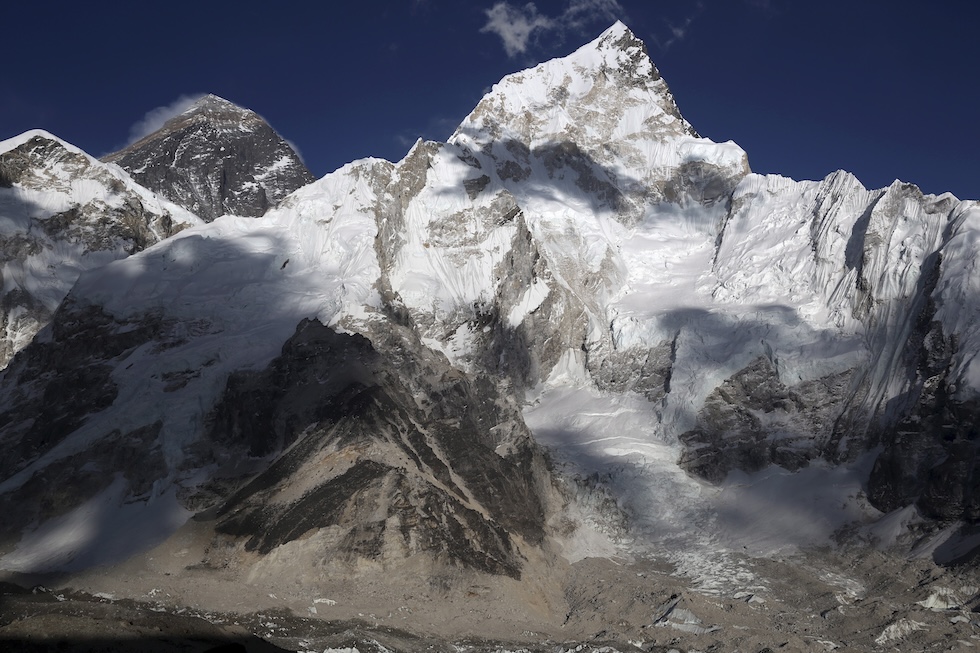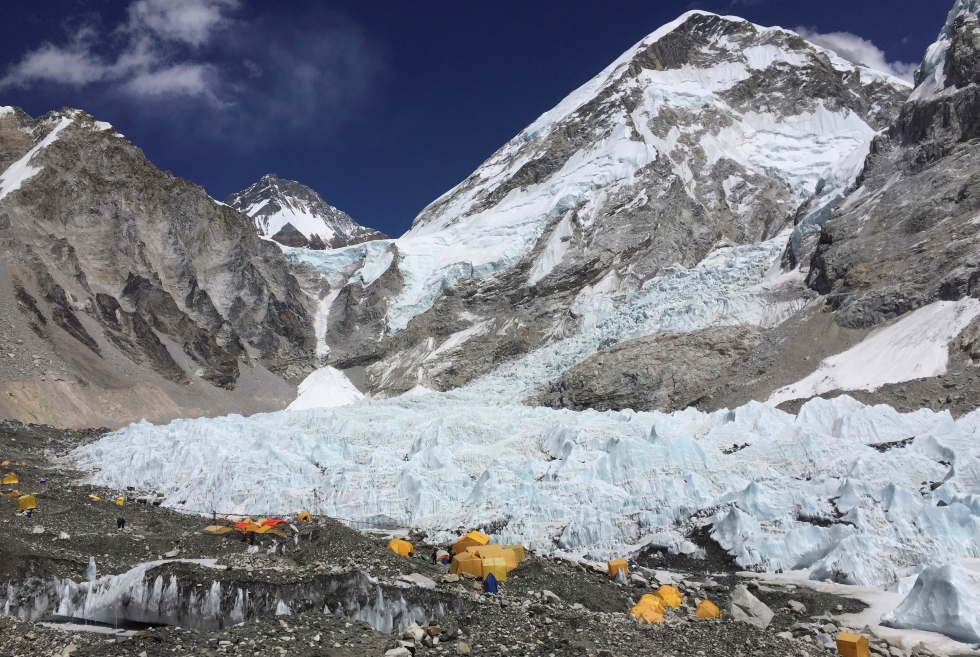Hikers walk in front of Mount Thamsirku as they return from Mount Everest Base Camp (Reuters/Navish Chitrakar)
The Nepalese authorities decided this after problems had accumulated on the world's highest mountain for years
Climbers intending to summit Mount Everest, the highest mountain in the world, will have to return to their base camp with feces produced at the highest part of the mountain. This was recently decided by the Khumbu Basangalhamu Rural Municipality, which includes much of the Nepalese side of Mount Everest.
On Mount Everest, due to the high altitude and low temperatures, feces do not completely decompose: for many years, an increasing number of people have been climbing the mountain, which, although it requires great means and preparation, is more accessible than other famous peaks, has caused A growing problem. From feces and garbage.
The Khumbu Basangalhamu municipality has decided that everyone who wants to climb the mountain will have to buy some special bags at the base camp, the starting point for the routes leading to the summit from the Nepalese side (Everest is divided by the border between Nepal and China). City Mayor Mingma Sherpa said: BBC News The bags will be checked upon their return. Mingma said he had received complaints that feces could be seen when climbing the mountain, and that some climbers had fallen ill. According to Mingma, this is unacceptable and “harms our image.”

(Dieter Glogowski/Leaf/Contrasto)
In fact, this problem has been known for some time, but attempts to treat it have not achieved much success so far. Several expeditions are organized every year specifically to collect some of the rubbish left by climbers on the mountain, especially torn plastic cans and tents and empty oxygen cylinders (which many climbers use, because at high altitudes each breath of air contains less oxygen, and so on You get tired more easily). But it is the stool that creates the biggest problems.
At the base camp, a relatively well-equipped and popular group of semi-permanent structures, 5,300 meters above sea level, there are private toilets, which are emptied regularly. Between March and May, the most suitable period for climbing, about 1,500 people use the camp. Things become more problematic during the next 3,500 meters of ascent, necessary to reach the 8,848-meter summit: in the four advanced camps before the summit there are no suitable structures, and climbers must relieve themselves in the open for more than a month. , the time it usually takes to reach the top and descend.
– Read also: China and Nepal decided that Everest was a little higher
This is done by digging a hole in the snow and ice. Problems arise when holes fill up, when snow becomes less dense at higher elevations, or when it melts, carrying feces downstream, where it also happens to cause diseases in people who draw water from rivers.
The problem is exacerbated by the increasing number of people trying to climb Mount Everest. In 2023, 478 permits were granted to foreign climbers. If you add Sherpas and Nepalese porters to these, the number of people who have attempted to reach the summit is about 1,200 people. Of these, only half of them reached the top.
– Read also: One of the most difficult climbs in the history of Himalayan mountaineering
Tshering Sherpa, CEO of the NGO Sagarmatha Pollution Control Committee (SPCC), which deals with waste treatment in mountains in the region, says there are three tons of human waste on Mount Everest. The biggest problems are at Camp South, the last camp before the summit, where Shearing believes half of the stool is located. Stefan Keck, a mentor heard from him BBC NewsThe South Col (7,906 metres) has a reputation as an “open-air toilet,” he said, partly because strong winds mean there is less snow to bury feces under.
SPCC has received a license from the Khumbu Basangalhamu Municipality to purchase 8,000 special stool bags in the United States, which will be distributed to approximately 1,200 climbers expected this year, starting in March. The bags contain chemicals that harden the stool and make it almost odorless. Shearing said each climber will receive two bags.
Mingma Sherpa, who is also the first Nepalese to climb all 14 mountains above 8,000 metres, said a similar system had already been tested on other mountains, including Denali, the highest mountain in North America. Since 2007 in Denali, defecation has been mandatory in special containers containing biodegradable bags, which are usually thrown into crevices surrounding the camps. From there it is buried by snowfall and advancing glaciers, but within a few years it will reappear later, due to the natural movement of the glacier.
However, on Everest, bags containing feces must be returned to base camp, where they will be checked to ensure that they contain the expected amount of feces and that the climber has not defecated in the open, and then disposed of. Controls on other types of litter have been implemented for several years: climbers must pay a deposit of around 3,500 euros, which is not returned if they do not bring at least 8 kilograms of waste, organic or otherwise, to the base camp.

Everest Base Camp (AP Photo/Karen Loeb)
Since 2010, there has been a project to create a plant to produce biogas from human waste collected from the base camp. The project is not yet complete, and feces are currently being dumped into a pit at Gorak Shep, just below the base camp.
– Read also: Nepal wants to move Mount Everest base camp
Even after strong international pressure, the Nepalese government has in recent years tightened some controls and worked to make ascents of Mount Everest more environmentally sustainable. For the country, the Himalayan region is an important tourism resource and for this reason a decision is being taken with great caution about introducing new restrictions so as not to damage the sector.
Mount Everest was first climbed in 1953 by New Zealand climber Edmund Hillary and Nepalese Sherpa Tenzing Norgay. Since then, the feat has been accomplished by about 4,000 people, some with the help of oxygen tanks, Sherpa guides and helpers carrying equipment. In the same period, about 330 people died during the attempt, and the bodies of about 220 of them remain missing and covered in ice and snow.
– Read also: He climbed Mount Everest for the first time in 70 years
Continue posting

“Reader. Travel maven. Student. Passionate tv junkie. Internet ninja. Twitter advocate. Web nerd. Bacon buff.”



